Normal Distribution
Published:
This post covers Normal Distribution from https://www.mathsisfun.com/data/standard-normal-distribution.html and https://www.mathsisfun.com/data/standard-deviation.html
Ztable: https://www.mathsisfun.com/data/standard-normal-distribution-table.html
Ztable: Z
Data Distribution
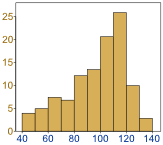 | 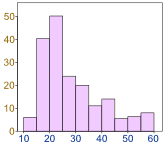 | 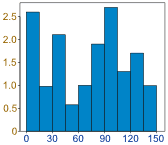 |  |
|---|---|---|---|
| Spread more on left | Spread more on right | jumbled up | Data around central value |
Examples of Normal Distribution
- Heights of people
- size of things produced by machines
- errors in measurements
- blood pressure
- marks on a test
Normal Distribution
- mean = median = mode
- symmetry about the center
- 50% of values less than the mean and 50% greater than the mean
Standard Deviation
- measure of how spread out numbers are
- square root of the Variance
Variance is average of the squared differences from the Mean
- Example
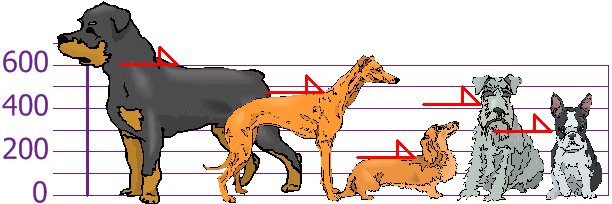
- Heights: 600mm, 470mm, 170mm, 430mm and 300mm
- Compute Mean, the Variance, and the Standard Deviation
- Mean
- 394
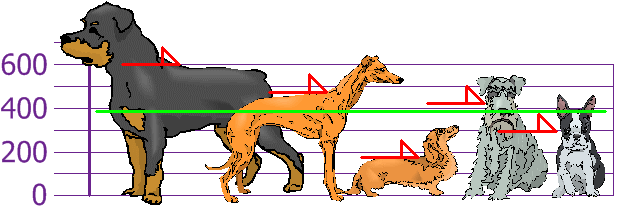
- Variance
- Each Dog’s Difference from the mean

- 21704
- Standard Deviation
- 147.32
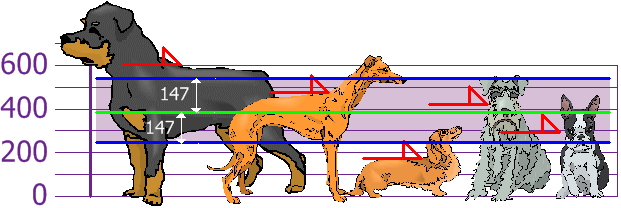
- SD is useful since we can show which heights are within one Standard Deviation (147) of the mean (394 mm)
- Using Standard Deviation, we have a standard way of knowing what is normal and what is extra large, or extra small
- Correction for Sample Data
- If the data is population, then variance is average of squared differences
- If the data is sample from a bigger population, we divide by N-1 for calculating variance
- Sample Variance: 27130
- Sample Standard Deviation: 165
Standard Deviations
 |
|---|
| 68% of values are within 1 standard deviation of the mean / 95% of values are within 2 standard deviation of the mean / 99.7% of values are within 3 standard deviation of the mean |
- Example
95% of students are between 1.1m and 1.7m tall. Assume data is normally distributed, compute mean and standard deviation
- Mean is halfway between 1.1m and 1.7m
- Mean = (1.1m + 1.7m) / 2 = 1.4m
- 95% is 2 standard deviations either side of the mean (a total of 4 standard deviations) so:
- $1~SD = \frac{1.7m-1.1m}{4}=0.15$
Result
It is good to know the standard deviation, because we can say that any value is:
- likely to be within 1 standard deviation (68 out of 100 should be)
- very likely to be within 2 standard deviations (95 out of 100 should be)
- almost certainly within 3 standard deviations (997 out of 1000 should be)
Standard Scores
The number of standard deviations from the mean is also called
- Standard Score
- sigma
- z-score
Example
One student is 1.85m tall
- Is there a standard way of telling information about height
- 1.85m is 3 standard deviations from the mean of 1.4
- $ \frac{1.85 - 1.4}{.15} = \frac{.45}{.15}=3 $
- Thus, z-score is 3.0
Example: Travel Time
26, 33, 65, 28, 34, 55, 25, 44, 50, 36, 26, 37, 43, 62, 35, 38, 45, 32, 28, 34
Mean is 38.8 minutes, and the Standard Deviation is 11.4 minutes
Compute z-scores
- $z = \frac{x - \mu}{\sigma}$
- $z = \frac{x - mean}{std}$
data = np.array([26, 33, 65, 28, 34, 55, 25, 44, 50, 36, 26, 37, 43, 62, 35, 38, 45, 32, 28, 34]) mean = np.mean(data) std = np.std(data) z = (data - mean)/std # stats.zscore(data) print(z) z1 = data[np.where(np.abs(z)>1)] z2 = data[np.where(np.abs(z)>2)] z3 = data[np.where(np.abs(z)>3)] print(z1) print(z2) print(z3)
Why Standardize?
- Marks out of 60
- 20, 15, 26, 32, 18, 28, 35, 14, 26, 22, 17
- Most student have less than 30 marks
- Mean = 23 and Standard Deviation = 6.6
- -0.45, -1.21, 0.45, 1.36, -0.76, 0.76, 1.82, -1.36, 0.45, -0.15, -0.91
- Only two students have lower marks than one SD
- Marks out of 60
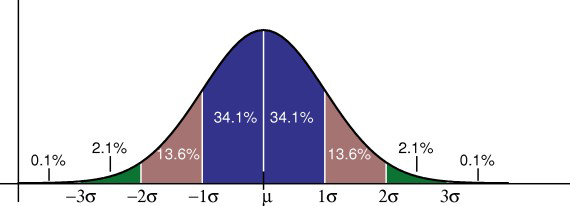
- Your score in a recent test was 0.5 standard deviations above the average, how many people scored lower than you did?
- Between 0 and 0.5 is 19.1%
- Less than 0 is 50% (left half of the curve)
- So the total less than you is:
- 50% + 19.1% = 69.1%
References
- https://www.mathsisfun.com/data/standard-normal-distribution.html
- https://www.statisticshowto.com/probability-and-statistics/normal-distributions/






